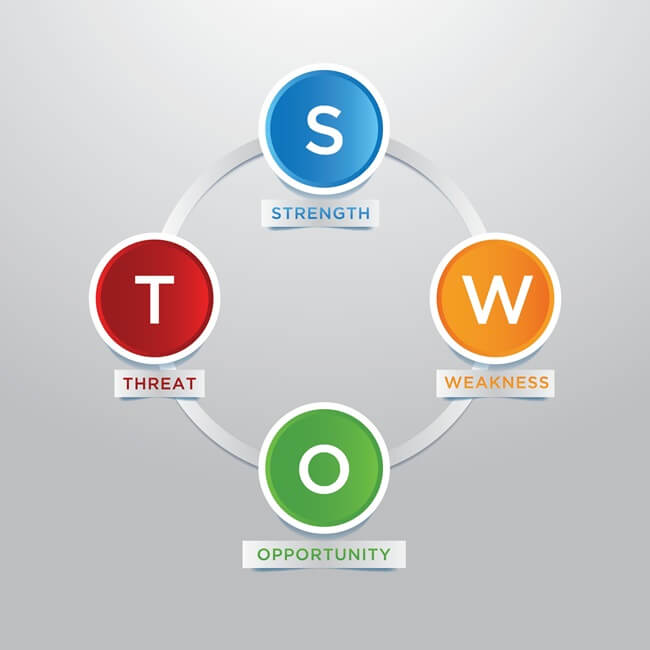20 Strengths and Weaknesses of Leaders in Science
What are the essential strengths and weaknesses of leaders in science? Strong scientific leadership is vital in driving scientific progress and innovation. The scientific community needs leaders who inspire others, make ethical decisions, and effectively communicate their findings to experts and the public.
Why do scientists need leadership skills for a career in science?
In another article, I argued that most scientists need good leadership abilities because they work in groups and become group leaders sooner or later during their careers. Most early career researchers start with their own small groups without any leadership training and have a lot of blind spots regarding essential transferable skills.
To prepare a leadership development plan, scientists must know the skills and expertise they need to generate great research and create a thriving working environment for their research group.
Strong leadership by research group leaders is crucial for advancing scientific knowledge and fostering innovation – not only by inspiring their teams but also by driving research initiatives and facilitating collaborations with other research groups.
In addition, professional leadership also sets the tone for ethical research practices in the workplace and promotes a culture of integrity within the entire organization.
Although the strengths of great science leaders are often celebrated, their weaknesses are hushed up. Therefore, leadership weaknesses are neither critically discussed nor improved. To become a successful leader in science, you must strive to balance strengthening your existing skills and compensating for your weaknesses.
It is necessary to make a SWOT analysis (strengths, weaknesses, opportunities, and threats) of your leadership traits to learn which type of leader you are right now and how to develop strengths-based leadership.
*** 10 Examples of Essential Leadership Strengths in Science
The following list of 10 selected strengths is by no means comprehensive but represents the ten most common strengths I have observed among persons in a leadership role during the last two decades of my career. Each strength is followed by a short one-sentence action plan in case you want to improve and include it in your leadership development plan.
1. Knowledge and expertise in your field are essential – become an expert!
Becoming an expert is crucial for scientific independence
From a personal career perspective, becoming an expert is absolutely crucial for a successful career in science. Developing scientific independence by becoming competent and visible in a selected field, forming networks, getting funding, publishing exciting data in high-quality journals or books, and generating excellent research is essential.
With increasing seniority, the best scientists become generalists and provide broad perspectives beyond their fields’ specificities. They become thought leaders.
The world needs experts to tame the abundance of knowledge
The world desperately needs experts as thought leaders. We live in a complex world, and knowledge is dramatically expanding. Nobody can comprehend anymore all the data which are produced daily. The division of labor is vital to data collection, data analytics, and critical thinking. Highly competent and specialized experts are needed to interpret significant findings in the context of the questions addressed and the methods used.
Experts are needed to generate expert knowledge in a defined field (such as molecular biology, economics, architecture, or art). So far, artificial intelligence systems can not do that and often come to misleading conclusions. Scientific leadership often requires a knowledgeable person with an open mind who is able to think critically and helps to communicate specialist knowledge to the public.
Action plan: Read about becoming an expert and implement the most relevant ideas.
2. Passion for research and scientific discovery – essential for a great leader in science
No surprise, a passion for research and scientific discovery is among the top strengths of a scientific science. It fuels a scientific leader’s drive to explore new ideas, challenge school book wisdom, and make meaningful contributions to their field. When leaders are passionate about their work, they’re more likely to stay motivated and engaged, inspiring others to share their enthusiasm.
Action plan: Read about the dilemma between career or contribution and implement the most relevant ideas.
3. Curiosity – keeps the leader and the team alive
Curiosity is crucial for scientific leaders because it encourages them to ask critical and sometimes naive or ‚stupid’ questions. This constant pursuit of knowledge helps to keep their research fresh, interesting, and on the cutting edge. In addition, a curious mindset sets a positive example for team members and fosters a culture of exploration and learning.
Action plan: Cultivate curiosity by asking and allowing critical questions (politely and constructively), seeking knowledge, and fostering a culture of exploration within the team.
4. Innovation – the driver of progress
Closely linked to curiosity is the pleasure of innovating. Innovation is a hallmark of the best leaders in research because it enables them to develop new solutions to complex problems. They find better ways to solve notorious problems. By thinking outside the box and embracing new ideas, they can create innovative concepts and significantly advance their field. This adaptability is an essential component for staying relevant and competitive in their area of expertise.
Action plan: Encourage innovation and allow your staff members to think outside the box. Foster an environment where everyone is able to think critically. Embrace new ideas that may not lead directly to grants or publications. A spontaneous good idea might develop into s successful project. I like Google’s 20% rule that allows employees to spend 20% of their work time on projects they believe will benefit the group, in addition to their regular projects. Some of my best publications are the result of such projects based on Ph.D. students’ 20% projects.
5. Vision for future progress – a vital leadership style to motivate the team
A clear vision for future progress and passion for science are highly motivating leadership qualities. They are key pillars for transformational leadership. Transformational leadership styles inspire employees to strive beyond job duties to work toward a shared vision, whereas transactional leadership focuses more on extrinsic motivation such as getting a title or more money.
This approach to leadership is essential because they allow scientific leaders to see the big picture, set ambitious goals, and create a roadmap for achieving them. Leaders use their ability to see the bigger picture for leading the organization with a strategic plan through ever-changing scientific and political challenges. They are not distracted by the pecularities of specific situations and keep focussing on the long-term developments and goals.
Developing such a higher-level vision is a competitive advantage because they may anticipate future trends, challenges, and opportunities and help advance their field.
Action plan: Develop a clear vision for future progress in your personal and professional life and – more generally – in your research field. Learn how to develop a leadership vision. You may study this more thoroughly by working through the book Vivid Vision: A Remarkable Tool for Aligning Your Business Around a Shared Vision of the Future (affiliate link) by Cameron Herold et al.. This book explains developing a clear, compelling vision to motivate your team.
6. Strong analytical and problem-solving skills – cultivate the ability to break down complex problems
Scientific leaders need strong analytical and problem-solving skills to make sense of complex data, identify trends, and solve difficult problems. They can develop well-reasoned solutions and guide their teams in the right direction by breaking down complex issues into manageable parts. These are important skills particularly during the difficult phases of a research project that are emotionally challenging for researchers at the beginning of their careers.
Action plan: Strengthen your analytical and problem-solving skills to break down complex problems. This book may help you become better at it: The Systems Thinker – Analytical Skills: Level Up Your Decision Making, Problem Solving, and Deduction Skills. Notice The Details Others Miss by Albert Rutherford (affiliate link)
7. Effective communication of scientific data and findings – become visible in your field
Convincingly explaining their research
Although scientists may be considered less social than other working populations, effective communication is critical for scientific leaders. They must share their research findings with others within and outside their field to market their research and become known for their competency in their specific area of research.
They must clearly explain the significance of their work to convince others to collaborate on projects, secure funding, and influence public policy. Good communication skills also helps leaders to manage their teams more effectively, ensuring everyone is on the same page and working towards a common goal, such as publications, patents, or grant proposals.
Bridging the gap between scientists and the public
Scientific leaders must explain to the public why their research is relevant and deserves funding from taxpayers. In addition, by making complex scientific concepts accessible, they can generate public interest, inform policy-making, and promote a broader understanding of their field.
Action plan: To convince your team, your colleagues, and the public that your research is important and relevant, you must learn to explain the “Why, “the compelling reason to pursue this research line. Read Start with Why: How Great Leaders Inspire Everyone to Take Action by Simon Sinek (affiliate link). This book explores the concept of a compelling purpose (the “Why”) as a key element of your leadership style and effective communication.
8. Collaboration and teamwork – profit from complementary skills and expertise
Building and managing diverse teams
The ability to work with people from different backgrounds is one of the most important qualities of great leaders. Research teams are often pretty diverse. There are scientists at different career stages (bachelor, master, Ph.D., postdoc, tenure-track, assistant and associate professors, and full professors), technicians, or administrative colleagues. Each employee possesses a different set of skills.
Building and managing diverse teams is vital for scientific leaders because they bring together people with different perspectives, backgrounds, and skill sets to work collaboratively on multiple joint projects and combine their unique skills to tackle complex research problems.
Action plan: If you want to learn more about the basic principles of teambuilding, let me suggest my favorite book on this subject: The Five Dysfunctions of a Team: A Leadership Fable by Patrick Lencioni. This book presents a fictional story about a struggling team and the five dysfunctions that prevent it from achieving its goals: absence of trust, fear of conflict, lack of commitment, avoidance of accountability, and inattention to results. A must-read for starting team leaders.
9. Adaptability and resilience – reduce the frustration of the team
Embracing uncertainty and change
In research, we continuously make decisions relying on minimal information. Findings are often unexpected spanning from technical challenges that yield no findings to results that markedly diverge from the initial hypothesis. Thus, changing the experimental design or the initial hypothesis is frequently necessary. However, some leaders may end up feeling overwhelmed or struggling to adapt. Therefore, being willing to take risks and embracing uncertainty is vital for scientific leaders (and scientists in general) to remain adaptable.
Learning from failures and setbacks
In my experience, about 70% of all experiments fail. Systematically learning from failures and setbacks is, therefore, a vital skill to grow and improve. Reflecting on what went wrong and identifying areas for improvement may help leaders make decisions in the future that are more informed and foster a culture of continuous learning and enthusiastic troubleshooting within their team.
Action plan: Develop a procedure for effectively analyzing and learning from failures and setbacks. Establish a systematic and progress-oriented approach that encourages open communication, reflection, and growth.
Start by fostering a work culture of psychological safety, where team members feel comfortable sharing their experiences and admitting mistakes without fear of judgment. Encourage regular team meetings after finishing projects or publications. Discuss the challenges, lessons learned, and potential improvements for future endeavors. Guide the conversation with a structured framework like the After Action Review (AAR). You may adapt the template created by cebma.
10. Ethical decision-making – be a role model
Prioritizing scientific integrity
There are many personal and societal reasons not to commit scientific fraud. Scientific leaders are major role models for their staff members and colleagues to prioritize scientific integrity. It is crucial to embody and uphold the credibility of their work and the reputation of their institution and field. By demonstrating that their research is conducted responsibly and transparently, they can maintain public trust and ensure their findings are reliable and accurate.
Action plan: Make absolutely clear that scientific integrity is essential for working in your group. You are an important role model. Overcommunication is a must. Explain repeatedly that sloppy research practices and fraud are bad for science in general and regularly ruin the career and life of scientists – thus, it is never worth it.
Balancing competing interests and stakeholders
Scientific leaders need to balance competing interests and stakeholders. For example, the supervisor might aim to publish in a journal with a high impact factor, while the postdoc may wish to publish the results as soon as possible to secure a personal grant or the next position. Complex situations like that need a balanced decision. In such complicated cases, scientific leaders need to carefully weigh the needs and priorities of the different parties to make ethical and responsible decisions that benefit everyone involved.
Action plan: In highly charged situations, take a time-out to decide wisely – ideally days or weeks later when the emotions are calmed down!
*** 10 Examples of Essential Leadership Weaknesses in Science
As for the list of strengths, the following list of 10 selected weaknesses is not comprehensive. Still, it represents the 10 most common weaknesses I have observed among scientific leaders during the last two decades of my career. Each weakness is followed by a short one-sentence action plan in case you want to improve and include it in your leadership development plan.
1. Overemphasis on technical expertise – become more human
There is no doubt: for a career in life sciences, leaders must possess a solid technical background. However, overemphasizing technical expertise can lead to the neglect of essential transferable skills. It is simply not enough to know the research methodology and the mechanisms of publishing well to be an effective leader in research. Leadership involves building a diverse team and being capable of handling employee’s conflicts.
Action plan: Read books or follow courses to train transferable skills such as communication, teamwork, and leadership to create a well-rounded skill set. These are my favorite books on the subject (affiliate links):
- Emotional intelligence: Why It Can Matter More Than IQ by Daniel Goleman. This book popularized the concept of emotional intelligence.
- Crucial Conversations: by Patterson et al. Vital advice on handling tense discussions between two or more people with high stakes and strong emotions.
- Difficult conversations by Stone et al. This book explains why some conversations are difficult and how to have more productive discussions.
- Cues by Vanessa van Edwards. A potent guide to the tiny signals you send with your stance, facial expressions, word choice, and vocal tone that modulate your influence as a leader.
2. Overreliance on data and metrics – learn transferable skills

While data-driven decision-making is essential in life sciences, an overreliance on metrics can lead to a narrow focus on measurable results, potentially neglecting interpersonal outcomes such as the pleasure of working together, passion for science, and the wild creativity of staff members.
You may argue that the ability to achieve goals, whether they’re short-term or long-term, is a key indicator of a leader’s effectiveness. However, leaders who overlook the importance of these teambuilding aspects may struggle to create a supportive research environment for their staff members.
Action plan: Read the books suggested in the previous point and this article on pressure or pleasure to get results in science.
3. Overemphasis on one’s own research – let others shine
Focusing too much on one’s own research can create a narrow perspective that may hinder openness to new ideas and insights that could enhance the quality and impact of the research. This approach may also foster a competitive, rather than collaborative, atmosphere and prevent recognition of the contributions of others in the field. Additionally, it may result in a failure to acknowledge limitations and gaps in the methodology or experimental design and a lack of recognition of the contributions of others in the field.
Action plan: Initiate and promote collaborative research initiatives of your staff members. Recognize and credit the contributions of peers in the field.
4. Arrogance – train honest humility
Arrogance often destroys effective leadership. An arrogant leadership approach may impede innovation and growth within their team due to their overconfidence and unwillingness to entertain diverse perspectives. Their self-assuredness can manifest as an inability to accept constructive feedback, collaborate effectively, or embrace novel ideas.
Moreover, such a leader’s egocentric approach can foster a toxic workplace characterized by condescension and disregard for others’ contributions, ultimately hindering the development of a supportive research team. This not only discourages collaboration but also deprives the researchers of the rich intellectual resources and synergies that arise from integrating diverse perspectives, experiences, and expertise.
Action plan: Practice active listening, solicit diverse perspectives, and consistently seek feedback while demonstrating humility.
5. Being overly critical – be more constructive
A life science leader who is overly critical can demoralize team members and stifle creativity. Constructive criticism is essential, but excessive negativity can erode trust, hinder collaboration, and impede progress.
Action plan: Provide balanced feedback with a focus on both strengths and areas for improvement, and systematically celebrate progress and achievements.
6. Being a micromanager – focus on the tasks that only you can do
Micromanagement is one of the most demotivating leadership traits. This management style is characterized by excessive oversight and control exerted by a leader or manager over the minutiae of the daily research tasks. This may affect the organization of schedules, experiments, or the handling of technical procedures. As a result, the autonomy and decision-making capabilities of the team members become increasingly restricted.
This stifling approach hinders the development of team members by denying them opportunities to learn, experiment, and grow independently. Consequently, micromanagement reduces productivity, creativity, and innovation because the leader’s focus on minutiae detracts the group members from more independent high-level thinking.
Action plan: Focus on the tasks only you can do – and delegate the rest. Delegate responsibilities based on team members’ strengths. Start with small commitments, and give more to those staff members who prove to be reliable and trustworthy. Monitor progress through regular check-ins instead of constant oversight to check whether they perform better overall with more responsibility.
7. Difficulty delegating tasks and trusting team members – let them prove themselves
Research groups often are diverse teams with complementary skill sets. Leaders who have trouble delegating tasks may create bottlenecks in the research process because crucial decisions are delayed until the group leader has made a decision.
Leaders who struggle to trust their team’s abilities and hesitate to delegate tasks may fail to fully tap into the group members’ expertise. A lack of delegation and trust may lead to frustration among the group members. In addition, leaders may become overwhelmed by their workload, leading to burnout and reduced effectiveness.
Action plan: Invest time to identify team members’ expertise and strengths in the workplace. Delegate tasks accordingly and give them possibilities to prove themselves. Reduce your workload by delegating those tasks that cost you the most energy. This will encourage you to delegate more.
8. Difficulty with prioritization – learn goal setting
Leaders struggling with prioritization distribute resources poorly, spreading them thinly across multiple projects. This mismanagement can lead to slower progress and reduced experimental and publishing outcomes. Many group leaders know that accepting multiple projects and procrastinating over the years is a common problem but hesitate to say “No.” This behavior particularly frustrates dependent researchers early in their careers who wait way too long to get a manuscript or a thesis draft back.
Action plan: Read any book on goal setting. For example, read Stephen R. Covey’s First Things First (affiliate link). This classic book describes an efficient approach for prioritizing that enables you to make changes and sacrifices needed to get more done in less time and be happy with it.
9. Insufficient mentoring and support for early-career researchers – create more support procedures
Insufficient support for early-career researchers in science may stem from overburdened supervisors, a lack of a doctoral school or formal mentorship programs, or inadequate training of postdocs who may exert some vital supervisory functions in a research team.
Due to insufficient support, young researchers may struggle to develop expertise and scientific independence. This inadequate support in the workplace can hinder their career progression, diminish job satisfaction, and even result in a higher attrition rate among early-career scientists, ultimately impacting the future talent pool and innovation within the scientific community.
Overburdened supervisors
Overburdened supervisors in scientific research often result from a confluence of factors, including the high demand for funding, increasing administrative duties, and pressure to publish. Additionally, the growing complexity of research projects, limited resources, and big, diverse teams exacerbates the strain on supervisors.
Consequently, these demanding circumstances may compromise their ability to provide adequate guidance and supervison, negatively affecting the research group’s and organization’s overall performance.
Action plan: Follow a course or read a book about time management. My favorite books on time management are (affiliate links):
Deep Work: Rules for Focused Success in a Distracted World by Cal Newport
Getting Things Done: The Art of Stress-Free Productivity by David Allen
The 80/20 Principle: The Secret to Achieving More with Less by Richard Koch
Lack of a doctoral school
About 97% of all young researchers find a job *outside* academia. In another article, I argued that most professors and group leaders are not qualified to train young researchers for the non-academic job market. Most professors focus on academic success and scientific excellence and are neither interested nor incentivized to prepare young researchers for a career outside academia.
Therefore, it became a common practice to delegate this aspect of training to doctoral schools to provide structured, interdisciplinary training and support to Ph.D. candidates and sometimes postdocs. To prepare young scientists for the non-academic job market, they should offer a comprehensive curriculum beyond traditional research skills.
For example, working on professional development plans, technical and transferable skill training, and industry networking opportunities may enhance their professional development and employability in diverse, non-academic careers.
Action plan: If there is no doctoral school or similar graduate program, advocate for establishing one. As long as there is none, find money to organize transferable skills courses and build relationships with industry partners for networking opportunities.
Lack of formal mentorship programs
A lack of formal mentorship programs can negatively impact young scientists’ preparedness for both academic and non-academic job markets. The absence of structured guidance may hinder their development of essential skills, limit exposure to diverse career paths, and restrict networking opportunities.
Action plan: Advocate for establishing structured mentorship initiatives within your workplace. Promote peer mentoring and networking, and provide resources for skill development and career exploration.
Inadequate training of postdocs
Colleagues from the US told me that their postdocs often serve as “lab rats,” primarily generating experimental data, while in Europe, they assume more managerial roles. These postdocs navigate a challenging position between demanding professors, PhD students, technicians, and industry partners. There are several strong arguments that postdocs need training in leadership skills for the workplace.
They need a complex set of leadership and management skills to excel. However, at most universities, there is no specific leadership training to prepare postdocs for their current management functions – although these organizational skills are desperately needed when they become the next generation of junior group leaders in academia or industry. These specific skills are trainable.
Action plan: Develop career development plans for postdocs, offer them management and leadership training, and encourage them to supervise early-career researchers.
10. No support of future leaders in science – encourage the next generation
Team leaders typically struggle with relinquishing control – particularly at the beginning of their careers. Similarly, research institutions do not actively invest in postdocs as future young leaders, often with the argument that they will probably leave and find a position elsewhere.
However, I am firmly convinced that group leaders benefit from cultivating leadership within their teams, encouraging shared responsibility, collaboration, and innovation. It typically increases team performance when postdocs take more responsabilities. It requires personal growth and character strengths to embrace this challenge and fully appreciate the advantages of empowering team members to learn essential leadership skills and become leaders. They must be able to develop these skills by being members of a team to test their new skills in a safe environment.
To my knowledge, the best description of this superior leadership development level is provided in John C. Maxwell’s 5 Levels of Leadership (affiliate link). This book outlines the progressive stages of leadership development. The first level is based on formal titles or leadership positions, the second emphasizes building relationships and trust; the third focuses on achieving results, and the fourth on people development. Finally, the fifth level represents a stage focused on leaving a lasting legacy and cultivating a successor.
Action plan: Read Maxwell’s 5 Levels of Leadership (affiliate link) and check at which level you are and what the next step is. Identify potential future leaders within your team and invest in them. Provide leadership training and mentorship opportunities, and encourage and facilitate their professional growth as leaders.
Developing a better leadership style never ends during a career in science
Leadership styles in science are not static; they evolve and develop throughout a scientist’s career. Different types of leaders and leadership styles are needed depending on the tasks and the staff members appointed. You become more self-aware and repeatedly identify your own strengths and weaknesses in every new context. To become a better leader, it is vital to be able to identify areas for growth and solve problems that arise within the team or organization.
Similarly, gaining a clear understanding of each employee’s unique strengths and weaknesses and addressing their individual needs can create a more cohesive and motivated team. This is vital to a leader’s role to be able to build cohesive teams and foster a collaborative work environment. There are many, partially contradicting leadership theories. However, all agree that continuous learning and self-improvement are essential for leaders to adapt to new challenges, stay current in their fields, and effectively lead their teams.
The importance of deliberate training for leadership in science
Deliberate training and professional development are essential for group leaders to continuously improve and grow by understanding their strengths and weaknesses to create the workplace of tomorrow.
Encouraging scientific institutions to train their leaders can help create a more productive and innovative scientific community.
Acknowledgments
I have used AI systems, including Grammarly, Google Gemini, and ChatGPT, to enhance the English and comprehensiveness of this article. This post may contain affiliate links, meaning I get a small commission if you decide to purchase through my link. Thus, you support smartsciencecareer at no cost to you!
Recommended reading
The following articles may also interest you:
- Is being a professor worth it?
- Job interview outfits in science – what to wear?
- How to become an expert in your scientific field?
- How To Write Faster: 19 Efficient Ways To Finish My Publication
- How to create a leadership action plan
- Assistant professor and associate professor – what is the difference?
- What is a Reader at a university?
- Should I Become A Professor? Success Rate 3 %!
- Am I good enough for a career in science?
- Am I doing enough for my scientific career?
- What is tenure?
- Why salary matters in science careers








